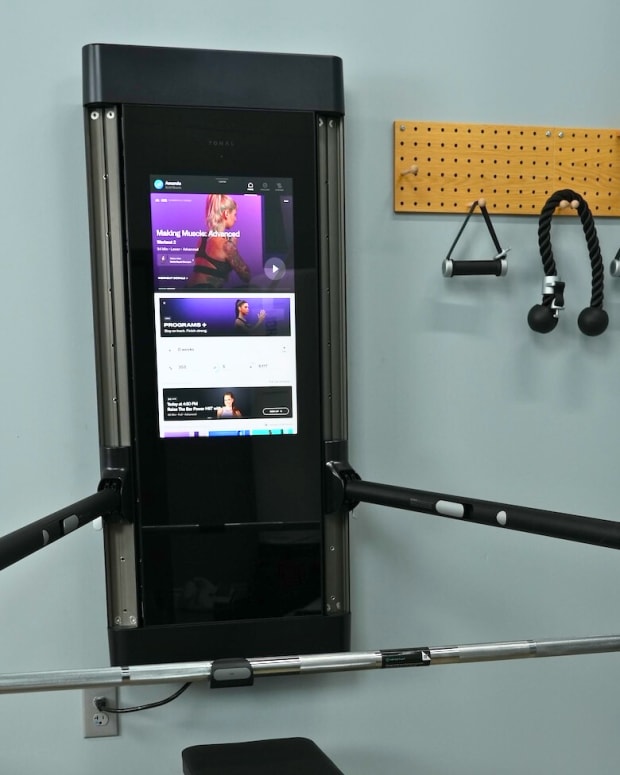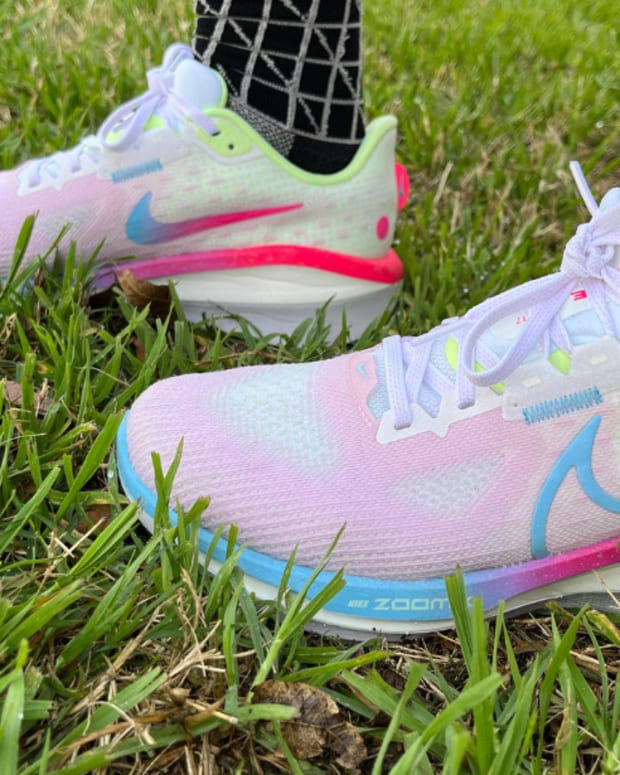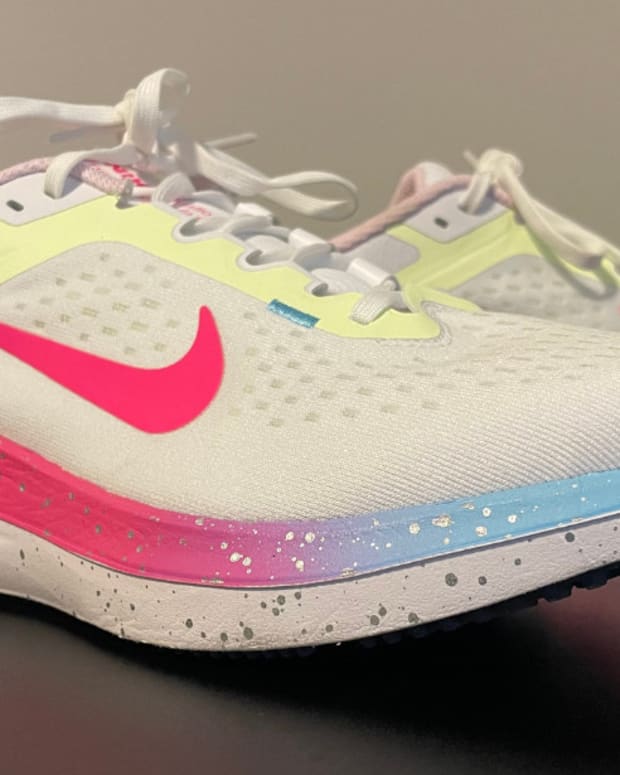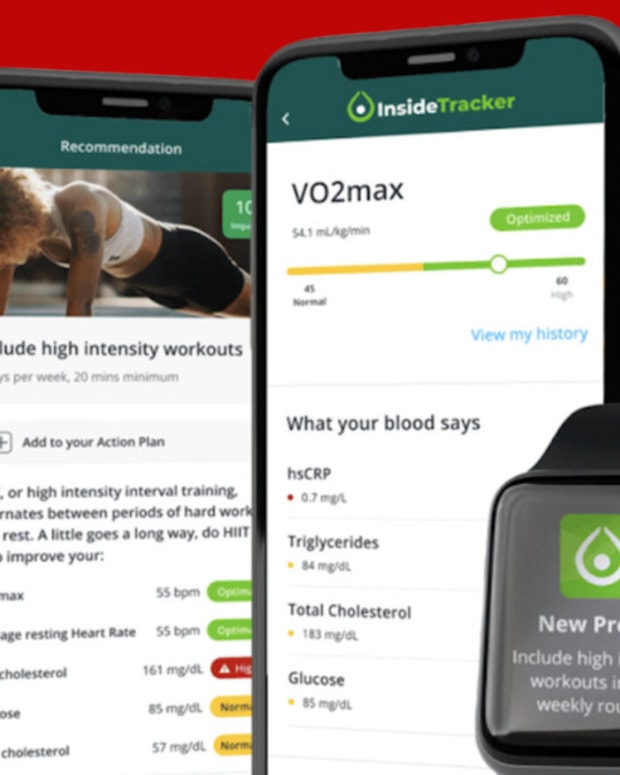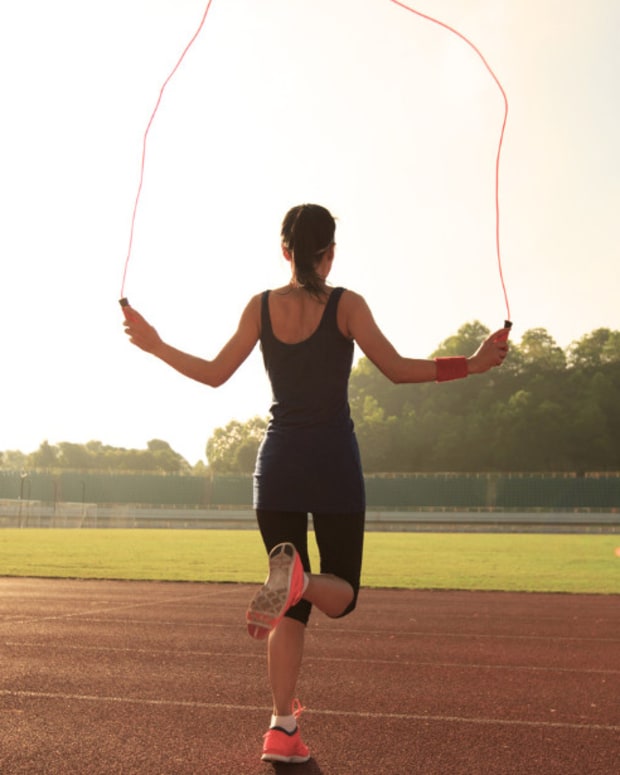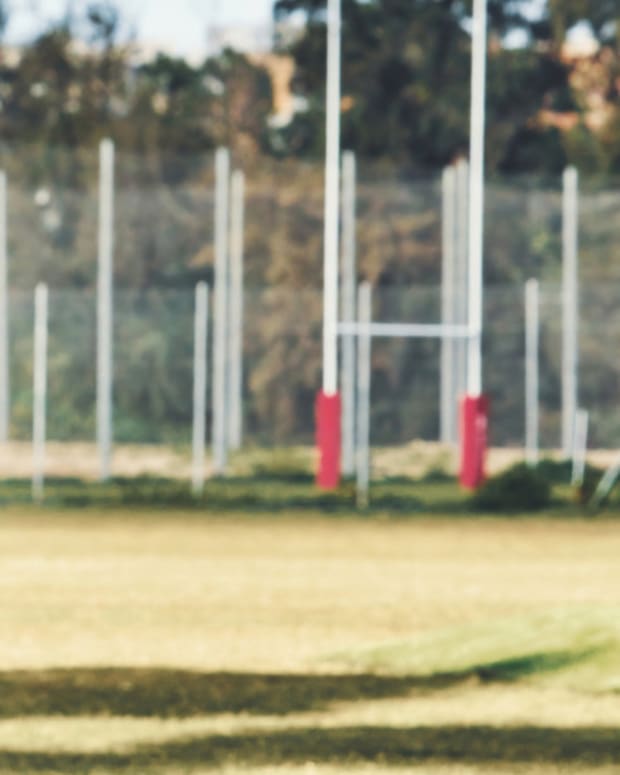The products featured in this article have been independently reviewed. When you buy something through the retail links on this page, we may earn commission at no cost to you, the reader. Sports Illustrated editorial staff are not involved in the creation of this content. Learn more here.
If competing with yourself is motivation enough to get out to ride, a bike computer is a great investment. Depending on the model you buy, bike computers can show you in real time how far you’ve gone, how fast you’re riding, as well as how long you’ve been on the bike. Some higher-end models have GPS capabilities that allow you to see a map of where you’ve ridden or download a route in advance, as well as connect with metric sensors on your bike like power or cadence. Whether you’re a daily rider or dabble as a weekend warrior, adding a bike computer to your rides will introduce lots of data to allow you to track your progress over the season as well as from week to week. In this article, you’ll find our top picks for the best bike computers, plus a comprehensive guide on how to decide which one is right for you.
Our Picks for the Best Bike Computers:
- Best Overall Cycling Computer: Garmin Edge 530
- Best Bike Computer with Navigation: Wahoo Elemnt Roam
- Best Bike Computer for Super-Long Rides: Garmin Edge 1040 Solar
- Best Touch Screen Bike Computer: Hammerhead Karoo 2
- Best Color Screen Bike Computer: Stages Dash L200
- Best Easy to Use Bike Computer: Wahoo Elemnt Bolt
- Best Horizontal Bike Computer: Lezyne Mega XL
- Best Basic Bike Computer: Cateye Padrone
Best Overall: Garmin Edge 530
Key Features:
- Display: Color screen
- Connectivity: Bluetooth, ANT+, WiFi
- Size: 50 x 82 x 20 millimeters
- Screen size: 66 millimeters (diagonally)
- Battery life: Up to 20 hours
- Touchscreen? No
In the early 2000s, Garmin became one of the first manufacturers in the game to offer GPS tracking devices for personal fitness use. Today, it offers a huge range of wearable, handheld and bike-mounted activity tracking products, and one of our favorite bike computers is the Edge 530. In addition to tracking the basics like current speed, average speed, maximum speed, elapsed time, ride time, distance, calories burned, elevation gained and current percent grade, this feature-packed computer offers data on anything you could want to know, including weather, your location on a map, pre-planned routes, training status, recovery status, distance left in climbs and saved waypoints. Even better news for mountain bikers: It tracks your jump count, air time and can connect with trail map apps like TrailForks to help you find your way when you head off-road. Its mapping function allows you to download route files and directs you turn by turn on a map as well as with text instructions.
Don’t just take our word for it—the Edge 530 is a crowd favorite on Amazon as well, with an overall rating of 4.5 out of five stars from over 2,800 reviewers. One verified buyer under the username tech_enthusiast was especially impressed with the battery life, writing that the Edge 530 “has great battery management even with always-on, auto brightness. It does auto pause well whenever you’re stopped so definitely enable it. I [rode] for three hours moving time, six hours total and it used only 40 percent of the battery!” If you’re looking to invest in a do-it-all bike computer that you can use on a road bike, gravel ride, mountain bike ride and daily commute—and maybe a few in the same day—look no further than the Garmin Edge 530.
Pros:
- All the connectivity: WiFi, Bluetooth and ANT+, as well as Varia lights, Shimano Di2 shifting and smart trainer control options
- Personalizable data screens
Cons:
- No external memory storage
- Lengthy set-up process
Best Bike Computer with Navigation: Wahoo Elemnt Roam
Key Features:
- Display: Color screen, zoom buttons, LED training indicators
- Connectivity: WiFi, ANT+ Bluetooth
- Size: 60 millimeters x 90 millimeters x 21 millimeters
- Screen size: 69 millimeters (diagonally)
- Battery life: Up to 17 hours
- Touchscreen? No
A huge benefit to having a bike computer is the navigation functions they offer. In addition to turn-by-turn navigation and mountain bike trail routes included with many computers in this list, the aptly-named Elemnt Roam has tons of extra navigation features that truly change the game.The On-Demand Route generation feature allows you to choose a destination and it will direct you there automatically. If you find yourself lost or needing to retrace your path, the Retrace Route feature directs you backwards along the route you just rode. Or, if it starts to downpour and you are in desperate need of some quick rerouting, simply use the Route to Start feature to get directions for the quickest way back home. The Elemnt Roam will also automatically download all your saved routes from any connected apps like Strava, Singletracks or Ride With GPS. This new version of the Roam was just released last fall and features a 64-color screen, glucose monitor connectivity, 32 gigabyte memory capacity and dual-band GPS which allows for better positioning data when you are in a busy area or under thick tree cover.
Verified Buyer Radim V. left a five-star review on Wahoo’s website, writing, “Great cycling computer that is very easy to customize—got it up and running quickly, as advertised.” For riders concerned about taking such specific directions off a small screen, verified buyer Kevin M. writes reassuringly in his five-star review on their site, “My vision is not the greatest, but I can clearly see the directions screen.” If you’re looking for an always-available adventure buddy to get lost with (and then found), the Wahoo Elemnt Roam has got your back.
Pros:
- Unmatched in-ride navigation capabilities
- Super user-friendly with a quick set-up process
Cons:
- Some reviewers noted that the battery life could be longer or was shorter than advertised/expected
Best Bike Computer for Super-Long Rides: Garmin Edge 1040 Solar
Key Features:
- Display: High resolution, color screen
- Connectivity: Bluetooth, ANT+, WiFi
- Size: 59 millimeters x 118 millimeters x 20 millimeters
- Screen size: 89 millimeters (diagonally)
- Battery life: 45 hours at full use, up to 100 hours in Battery Saver mode
- Touchscreen? Yes
When you’re hungry and sweaty after a ride, plugging in your bike computer to charge is at the bottom of the priorities list. Thankfully, with the Garmin Edge 1040 Solar you can ride 45 hours between charges even when you’re using it at full capacity. And for those extra long, extra remote bikepacking trips the Edge 1040 Solar has a battery saver mode that allows it to charge as you ride via solar power. Depending on brightness and the contact the unit has with direct sunlight, this feature can extend battery life up to 42 minutes for every hour in Battery Saver mode, giving you up to 100 hours of battery life from when you last plugged it into an outlet.
In addition to this awesome capability, it has a full roster of useful training metrics, navigation options, safety functions and connectivity features for all cyclists (even those with frequent access to an outlet). Some of our favorites include the daily suggested workouts, heat and altitude acclimation metrics, intuitive route planning, road- and mountain bike-specific performance insights and automatic emergency contact messaging upon incident detection.
The Edge 1040 Solar has 313 reviews on Amazon, with an average rating of 4.8 out of five stars. Verified Purchaser C.S. wrote in their five-star reviews, “Battery life is…great, and will last through four to five of my 25-30 mile rides easily.” Amazon reviewer DavidRSinger writes about how the extra navigation and data features make his rides less stressful and more fun: “I hate getting lost and love data to understand how I'm progressing. This device keeps me on track and allows me to monitor the grade ahead. It's invaluable.”
Pros:
- Charges via solar energy as you ride
- Jam-packed with data, analytics, navigation and metrics to upgrade your ride experience
- Large color screen
Cons:
- Touch screens can be finicky with gloves or hypersensitive to precipitation
Best Touch Screen Bike Computer: Hammerhead Karoo 2
Key Features:
- Display: Color screen
- Connectivity: ANT+, Bluetooth, and WiFi
- Size: 61 millimeters x 101 millimeters x 19 millimeters
- Screen size: 80 millimeters (diagonal)
- Battery life: 12 hours
- Touchscreen? Yes
You don’t necessarily need to shell out a whole paycheck in order to secure a bike computer with a touch screen—check out the Hammerhead Karoo 2. For right around half the price of the most expensive touch screen bike computer in this list, the Karoo 2 offers cyclists a thorough list of features and capabilities to enhance their training and on the bike navigation. Download a route from a third-party app and the Karoo 2 offers turn-by-turn navigation on the color screen, as well as beep alerts to notify you of upcoming turns, as well as a fully customizable and aesthetically pleasing user interface that’s easy to see at a glance. You can also download your prescribed workouts directly from apps like TrainingPeaks and have them on your computer screen as you complete them. The Karoo 2’s predictive CLIMBER feature gives you a heads up on climbs you are headed towards (even without a pre-planned route), and once you start them, it keeps you updated on your progress and changes in gradient so you can pace yourself and save a few matches for later.
On Hammerhead’s website, the Karoo 2 earned an average rating of 4.7 out of five stars, with 550 reviews. Reviewer John V. writes, “The Karoo2 is…elegantly simple to use, hiding enormous power and capabilities in a compact design and simple to use interface.” On top of all its great capabilities, the Karoo 2 comes with access to high-quality customer support personnel seven days a week. Reviewer Diego C. was a big fan of this, writing in his review that “The thing that makes this product above any product on the market is the customer service. They reply fast and get stuff done asap!” If a touch screen interface is non-negotiable for the bike computer you purchase, you get that plus the whole package at a reasonable price with the Hammerhead Karoo 2.
Pros:
- Simple, customizable data screens
- Anti-glare, waterproof screen
- In-ride routing and navigation options
Cons:
- Shorter battery life than most on this list
Best Color Screen Bike Computer: Stages Dash L200
Key Features:
- Display: Color screen, high resolution
- Connectivity: ANT+, Bluetooth, Wi-Fi
- Size: 60 millimeters x 94 millimeters x 22 millimeters
- Screen size: 69 millimeters (diagonally)
- Battery life: 18 hours
- Touchscreen? No
The Stages Dash L200 is like a mini neon sign for your training data. The super bright and colorful screen has 240 x 320 resolution, designed to make this bike computer easy to read for cyclists training under any kind of weather. The L in the name stands for large, meaning this is the biggest display Stages offers for the Dash—it’s also available in a slightly smaller unit, the Dash M200 (M for medium, you guessed it). It will run at full brightness for 10 hours, or on power save mode for up to 18. The full-color power data graphs make it easy to tell how much time you’ve spent in each training zone, and are honestly just pretty cool to look at. And like the Lezyne Mega XL (below), you can set it to read horizontally if you want to set it up on a handlebar.
On top of the gorgeous screen and display optics, the L200 has a substantial array of helpful training features. Connect with the Stages Cycling app to download routes and follow turn-by-turn navigation instructions on high-contrast maps designed to be easy to read at a glance, and upload ride data to cycling apps like TrainingPeaks or Strava. The computer automatically builds your workout screens based on what ANT+ sensors you have running so you can see all the information you want, and none of the extras you don’t.
Pros:
- High contrast, vibrant screen
- All the basic data and connectivity you need
- Turn-by-turn route navigation
Cons:
- No returns or refunds after 14 days post-purchase
Best Horizontal Bike Computer: Lezyne Mega XL
Key Features:
- Display: Portrait and landscape mode, no color
- Connectivity: Bluetooth and ANT+
- Size: 57 millimeters x 78 millimeters x 27millimeters
- Screen size: 69 millimeters (diagonally)
- Battery life: 48 hours
- Touchscreen? No
For riders who like to place their bike computer on their handlebar rather than their stem or a protruding mount, having a model that is readable horizontally is a huge plus, and the Lezyne Mega XL is one of our favorites. The 240x400 high resolution screen is only black and white, but the display is clear and readable and the 69 millimeter screen is plenty large to see all your data.
The Mega XL also has great connectivity features: The ANT+ compatibility allows it to read and display metrics from a power meter, heart rate monitor or cadence sensor if you have one, and the Bluetooth function can connect with your smartphone to upload ride data to fitness apps like Strava or TrainingPeaks, as well as receive texts, calls and email notifications while you are riding. The Mega XL can also connect with Lezyne's Smart Connect LED system and the Lezyne Ally smartphone app for additional customization and features. The GPS connectivity allows you super accurate readings on metrics like speed and distance, as well as thoughtful navigation options.
The Mega XL has 54 reviews on Amazon, and earned an overall rating of 3.9 stars. In their five-star review titled “Excellent Engineering,” verified purchaser Michael G. Heyman summarizes it well, writing, “This little guy does what it's supposed to and it does it well…It's a [black and white] display and it's not large, so it's not eye candy. However, it's a little marvel in what it does and how user-friendly it is. Gives you not only a list of connected devices, but even shows you their battery levels. Excellent GPS tops off the package.”
Pros:
- Can be used in portrait or landscape mode
- All the basic data you need
Cons:
- Screen on the smaller side
Best Basic Bike Computer: Cateye Padrone
Key Features:
- Display: Black and white
- Connectivity: None
- Size: 68 millimeters x 43 millimeters x 15 millimeters
- Screen size: 42 millimeters(diagonally)
- Battery life: One year (non-rechargeable CR2032 X1)
- Touchscreen? No
For a low-tech, no-frills option, the Cateye Padrone is available at the lowest price point on this list. This $55 computer displays the metrics you need in the moment: Current, average, and maximum speed, elapsed time, ride distance, lifetime distance and a clock. It comes with a magnetic speed sensor that attaches to your frame and a spoke and to transmit the data to the console (up to 27 inches away). The analog sensor works by reading how many times the spoke passes the frame in a given amount of time. Using your wheel size (you have to input this manually) it calculates your speed and distance with consistent accuracy. In his five-star review on Amazon, verified purchaser Richard Swent writes that, “It is easy to read and the distance readings are very accurate when compared to my GPS-based unit.”
The Padrone doesn’t have the capacity to store or send your ride metrics to a phone, so this could be ideal for riders who don’t use smartphones, or who use their phone to track their ride from their pocket but still want a visual to keep an eye on while they hammer. In addition to black, the computer comes in pink, blue, green and orange so you can choose a color that fits your style.
Pros:
- Doesn’t need to be recharged
- Large numbers on display
- Easy setup
Cons:
- No app connectivity or data saving feature
Why Buy a Bike Computer?
There are loads of ways a bike computer can positively impact your cycling hobby. Many computers have the ability to upload your workout data to apps like Strava or Garmin Connect, which can be useful for watching their fitness improve over time. Additionally, the fact that bike computers can display your metrics in real time as your riding can also be helpful for pacing yourself through a long ride or help you maintain consistent efforts during an interval workout. Some computers with GPS capabilities allow you to save the map of the route you’ve ridden so you can repeat it in the future, or can even display a route you’ve created and direct you turn-by-turn.
How to Use a Bike Computer
When you buy a new bike computer, setting it up can often be the trickiest part. If your computer comes with an app, that’s a great place to start. Once you’ve got it connected to your phone, many apps will walk you through the process of personalizing the computer for the way you want to use it.
Many bike computers allow you to configure the data screens so you can see the information that is most important to you as you are riding. This could include metrics like elapsed time, lap time, distance, speed and calories burned, as well as data from other sensors on your bike like power or cadence. Most computers will be recording all of this information, so setting up the screens just depends on your goals and what numbers you want access to during your workout.
In order to keep an eye on your computer without reaching into your pocket every few minutes, it’s a good idea to mount your computer to the stem or handlebar of your bike (usually the mounting kit is included in the box and is pretty simple to install). See “How to Mount a Bike Computer” below.
Once you’ve got it set up and mounted, you are ready to record a ride. In addition to the companion app, you can connect your bike computer with apps like Strava or TrainingPeaks to upload your workouts and keep a lifetime log of your rides, routes and personal records. Every few rides, make sure to detach your computer from the bike and recharge it.
Benefits of a Bike Computer
A large part of using a bike computer is tracking your ride data, but that can mean various things to different riders. For most, analyzing your ride metrics like average speed, power, distance and effort is a great way to see improvements. When you save and upload your workouts to apps like Strava or TrainerRoad, or even to the computer’s companion app, they often track metrics like your personal records over a certain distance, or all your efforts through a given segment of road and trail. If you train with a power meter or heart rate monitor, you can see how long you’re spending in different levels of exertion, and watch yourself get fitter over time. If you’re working with a coach through a website like TrainingPeaks, they might also prefer you to have a bike computer so you can share your data with them.
Another huge benefit of having a bike computer is the navigation features. If your bike computer is connected to GPS, it can often offer turn-by-turn directions on preloaded routes to help keep you on track. Some high-end models like the Wahoo Elemnt Roam even have functions that allow you to navigate back to the start at any point during your ride without a planned route, so you can get as lost as you please and it will get you home.
There are also plenty of non-fitness-related benefits of having a bike computer. Even the most basic ones can help you track how far and how long you’ve ridden so you can make sure you don’t go out too far before turning back, and allow you keep an eye on the time to help you stay on top of hydration and nutrition.
Related Post: The Best Electrolyte Drinks
What to Look for in a Bike Computer
Technology and capabilities
The most useful technology a bike computer can have is GPS capabilities. This gives your computer access to accurate location, distance and speed data, and allows you to record and follow routes. If you’re interested in uploading your workouts to apps like Strava or Ride with GPS, make sure to get a computer with Bluetooth connectivity, which allows it to communicate with your phone. Computers with ANT+ connectivity can read information from power meters, heart rate monitors and cadence sensors and display that data on your screen as well.
Training data
Even the most basic of computers will usually display your speed data (current, average and maximum of your ride), distance traveled, elapsed time and lap time. Based on which sensors you have connected, ANT+ capable computers can also display metrics like cadence, heart rate and power output as well. Beyond that, most GPS-enabled devices keep track of your location and draw a map of the route you took, or can direct you through routes you’ve downloaded to follow.
They can also display total elevation climbed and descended, as well as the grade and distance to the end of the current climb you’re on. Some bike computers even go further by analyzing this data for you and offering metrics on how well you’ve recovered, how intense your ride was, or how smoothly you rode through a section of trail. And once you upload your saved info to an app, oftentimes you’ll access even more in-depth metrics, comparisons, graphs and analyses.
Size
Computers come in various sizes, but for the most part are pretty pocket-sized. If you’ll be using it for following a map, having a bigger computer like the Garmin Edge 1040 (89 millimeter screen) can be helpful for seeing things in a bit more detail. You might also want to consider a larger screen if you plan to add many data fields into one or two screens instead of spreading it out through a few different pages (many computers allow you to toggle through different screens of data and maps). If you’re looking to maintain a low profile in the cockpit, a smaller version like the Stages Dash 200 (69 millimeter screen) will get the job done just fine.
Screen
Aside from screen size, some options you’ll have include color screens and touchscreen. Depending on your eyes, adding color to the screen can be helpful to add contrast and allow you to see the numbers in those tiny data fields more clearly in just a glance, allowing you to keep your eyes on the road a bit more. Touchscreens are a pretty cool technology, but like a cell phone, they can be finicky when it comes to using them with gloves on as well as overactive to raindrops or errant sweat drops that fall on the screen.
Battery
Pretty much every computer on the market these days has the ability to last a minimum of 12 hours, which is at least a couple of rides. For most people, that’s more than enough. But if you’re planning on entering a 24-hour race, or bikepacking in the backcountry without access to a charger for longer than that, it’s worth looking at options that have a longer life, or that can recharge via solar energy.
Cost
The bike computers in this list range in price from $55 up to a whopping $750. As they increase in price, they usually include more technology, capabilities and thoughtful details. It’s up to you to decide what’s best for your budget, but in our opinion the most expensive one isn’t necessarily what will fit your needs—sometimes the extra features don’t actually add that much to your experience.
How We Chose the Best Bike Computers
We considered the number of functions that various computers provided, along with how useful and reliable those functions are for the average bike rider. We read test reviews on the manufacturers’ websites, and took into account the overall ratings for each model. We also noted individual special features that computers offered which would make them ideal for certain groups, such as solar charging or off-road turn-by-turn navigation.
How to Mount a Bike Computer
The most popular place to mount a bike computer is somewhere on the handlebar or stem where you can see it as you’re riding. Most models come with a mounting system when you buy them, and usually it's a plastic piece the head unit locks onto with a quarter turn. You can secure the mount to the bike with zip ties or rubber loops, or sometimes it’s designed with a spacer-sized ring you can slide onto the headset above the stem and secure under the top cap. Wherever you end up putting it, just make sure you can clearly see the screen while you’re seated in the saddle and still push the buttons to operate it.
Bike Computer FAQs
Can I use a phone as my bike computer?
Yes. Apps like Strava or Ride With GPS allow you to use the GPS function of your phone to keep track of ride data like time, distance, calories, average speed and route. The data these apps can display while they’re recording is more limited than a bike computer, but a phone mount on your handlebars would still allow you to keep an eye on it during the ride.
How does a wireless bike computer work?
Their main source of data for super accurate distance and speed readings is GPS satellites. The other data they can display comes from calculations based on input like your age and weight, as well as information on your exertion from heart rate monitors, power meters and cadence sensors.
What bike computers do pros use?
Often the computers you see professional bike racers using are not their personal choice, but ones given to them or their teams by sponsors.
How long do bike computers last?
A good bike computer will last years, provided you don’t lose it or run it over in the garage. For the most part they are pretty durable little machines when it comes to getting wet or dropped, but if you are a concerned and/or accident prone rider, check out the warranty available on the models you are considering.
Besides a bike computer, what other accessories do I need?
This varies based on the type of bike you’re riding and how far you plan to go. But no matter whether you’re riding a hybrid bike, an e-bike or a high-end mountain bike, a good bike helmet is always a smart idea. Riders will also benefit from quality bike shorts, cycling shoes and repair tools.
Final Thoughts
Whether you want to track your routes, watch your fitness improve or simply keep an eye on your stats as you’re biking, investing in a bike computer can help you achieve those goals, and choosing the best one for your needs will upgrade your riding experiences big time.
Prices are accurate and items in stock as of publish time.








